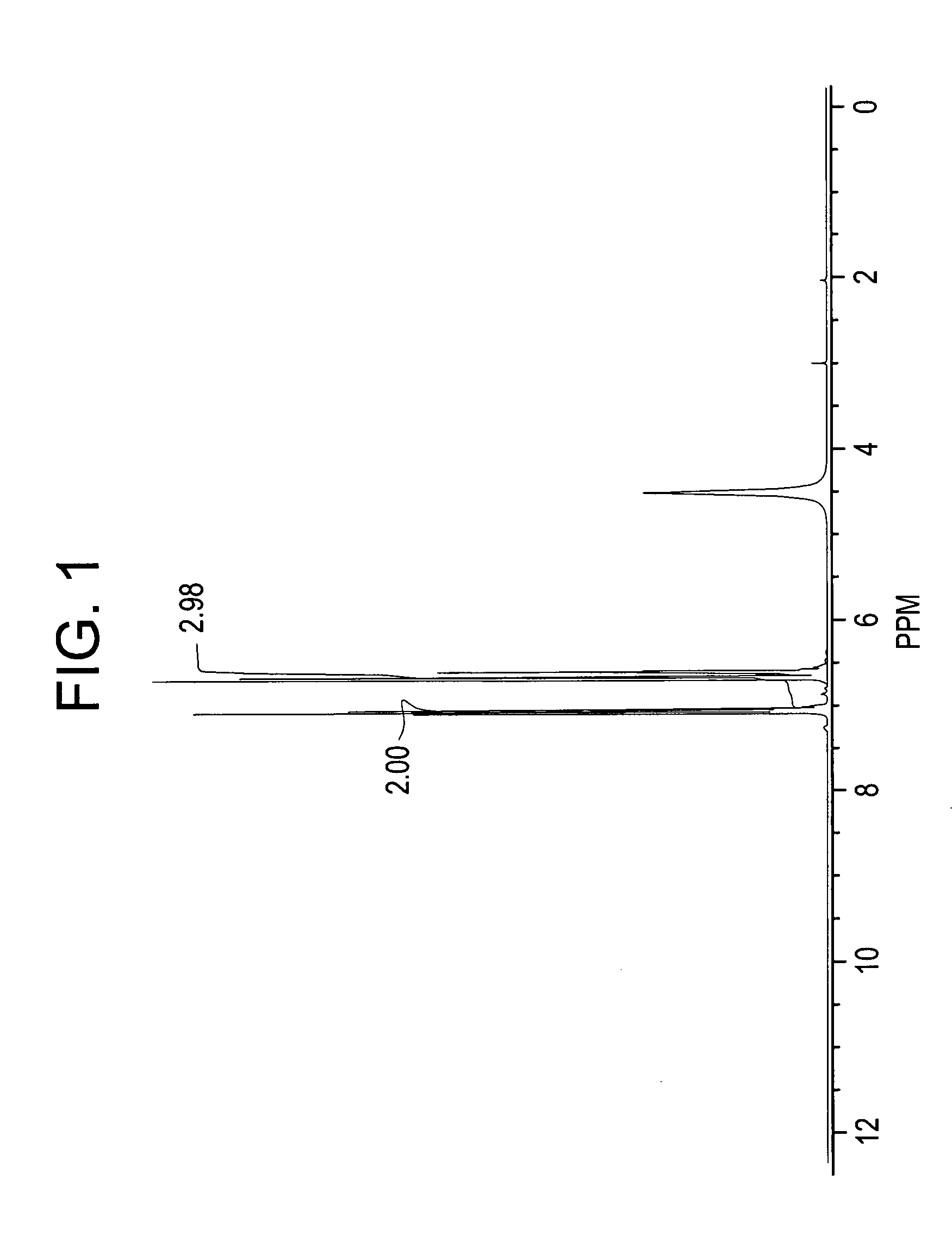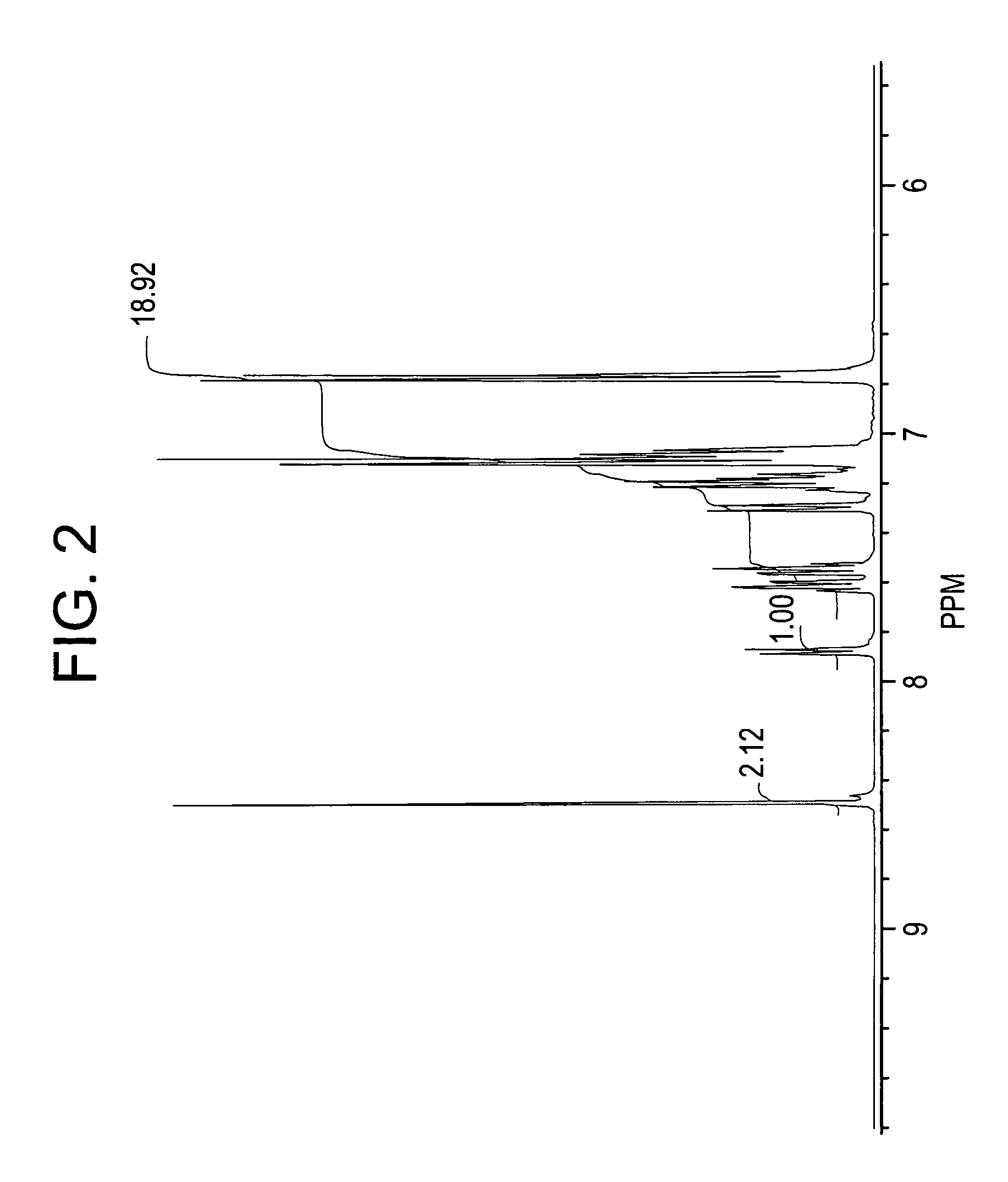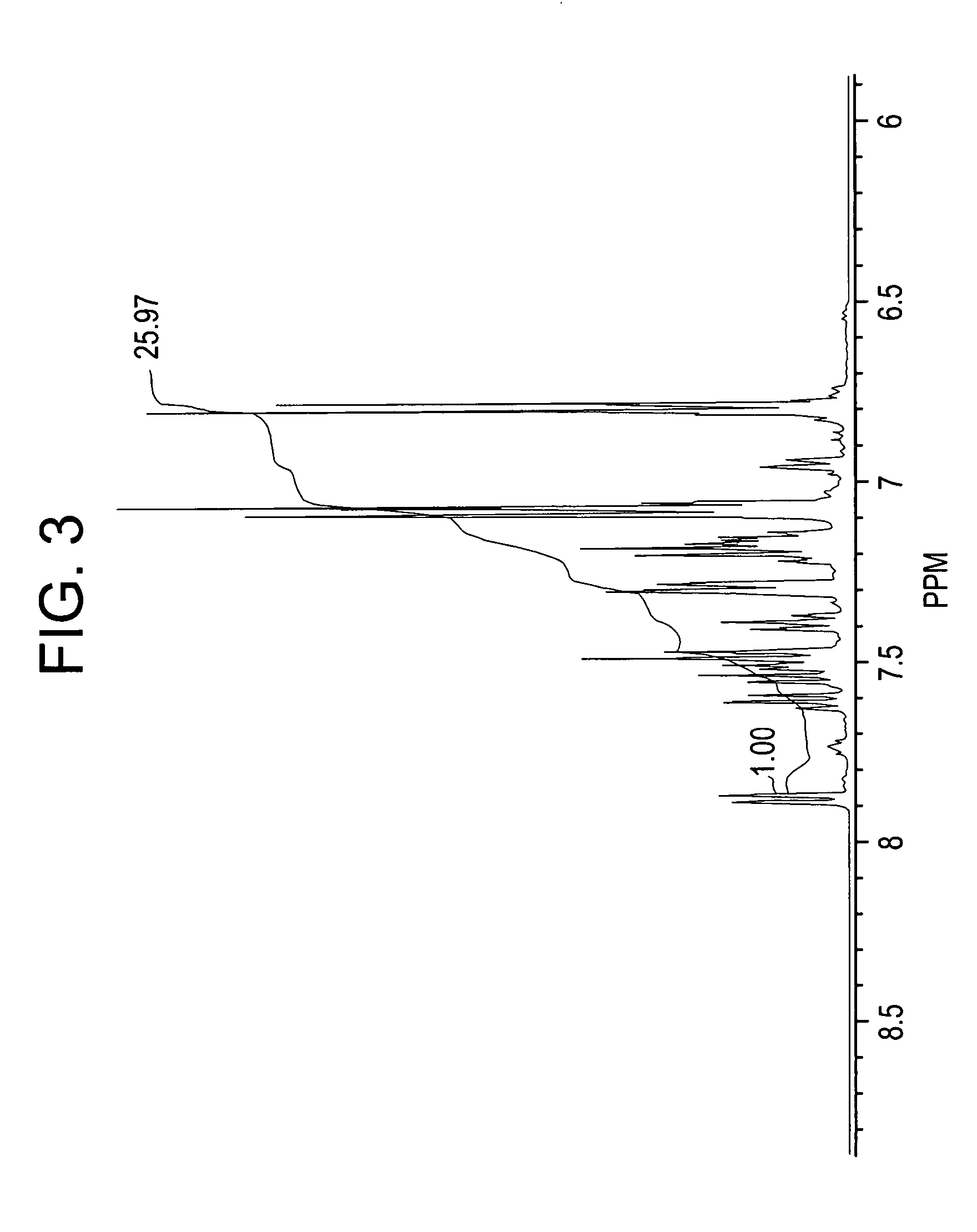Methods for producing and purifying 2-hydrocarbyl-3,3-bis(4-hydroxyaryl)phthalimidine monomers and polycarbonates derived therefrom
a technology of phthalimidine monomers and hydrocarbyls, which is applied in the field of producing and purifying 2hydrocarbyl3, 3bis (4hydroxyaryl) phthalimidine monomers, can solve the problems of inability to use pppbp as monomer or comonomer in subsequent polymerization reactions, affecting the transparency of the polymer product, and not being desirable for many commercial applications
- Summary
- Abstract
- Description
- Claims
- Application Information
AI Technical Summary
Benefits of technology
Problems solved by technology
Method used
Image
Examples
example 1
[0078]In this example, an adduct comprised of aniline and PPPBP was prepared, the crude PPPBP product isolated, and then purified.
[0079]A mixture of aniline (340 milliliters (ml)) and concentrated HCl (52 ml, 35% concentration) was heated to reflux under stirring. Water was completely removed by forming an azeotrope with aniline (about 20 ml). The mixture was then cooled to 145° C. and phenolphthalein (Formula (III), R2═H)) 80 grams (g) was added. The reaction mixture was maintained at 145° C. for 26 hours under nitrogen. The reaction mixture was then neutralized with sodium bicarbonate (56 g) under stirring at 145° C. for 0.5 hours and the aniline hydrochloride decomposed. Sodium chloride formed during the neutralization and unreacted sodium bicarbonate was filtered off. Toluene (550 ml) was added to the filtrate and the reaction mass cooled to room temperature. The precipitated solids were filtered off and washed with 100 ml of toluene. The wet cake was dried to constant weight at...
example 2
[0081]In this example, the adduct was prepared in accordance with example 1, wherein the quantity of aniline used was 310 ml. The results are shown in Table 1.
example 3
[0082]In this example, crude phenolphthalein product was firs isolated and then purified via adduct formation.
[0083]In this example, a mixture of aniline (133 milliliters (ml)) and concentrated HCl (26 ml, 35% concentration) was heated to reflux under stirring. Water was completely removed by forming an azeotrope with aniline. About 13 ml of aniline distilled over azeotropically with the water. The mixture was then cooled to 145° C. and phenolphthalein 40 grams (g) was added. The reaction mixture was maintained at 145° C. for 25 hours under nitrogen. The reaction mixture was neutralized by adding sodium bicarbonate (28 g) and under stirring at 145° C. for 0.5 hours and the aniline hydrochloride decomposed. Sodium chloride formed in the neutralization reaction and unreacted sodium bicarbonate were filtered off. Toluene (220 ml) was added to the filtrate and the reaction mass cooled to room temperature (24° C.). The precipitated solids were filtered off and washed with 100 ml of tolue...
PUM
| Property | Measurement | Unit |
|---|---|---|
| temperature | aaaaa | aaaaa |
| temperature | aaaaa | aaaaa |
| temperature | aaaaa | aaaaa |
Abstract
Description
Claims
Application Information
 Login to View More
Login to View More - R&D
- Intellectual Property
- Life Sciences
- Materials
- Tech Scout
- Unparalleled Data Quality
- Higher Quality Content
- 60% Fewer Hallucinations
Browse by: Latest US Patents, China's latest patents, Technical Efficacy Thesaurus, Application Domain, Technology Topic, Popular Technical Reports.
© 2025 PatSnap. All rights reserved.Legal|Privacy policy|Modern Slavery Act Transparency Statement|Sitemap|About US| Contact US: help@patsnap.com



